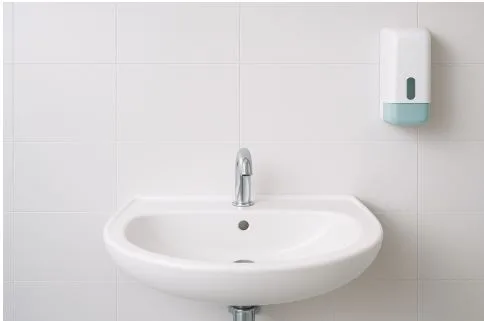Improving student health through better school hygiene practices
Maintaining hygiene in educational facilities is crucial for student health and learning. Clean environments reduce illness, improve concentration, and enhance academic performance. Schools must prioritize well-maintained washrooms to promote a healthy atmosphere.
Hygiene within educational settings plays a vital role in ensuring the well-being and academic success of students. A clean environment not only safeguards against illnesses but also fosters an atmosphere conducive to learning. In schools, the impact of hygiene extends beyond physical health, influencing students’ ability to concentrate and perform academically. Ensuring that facilities, particularly washrooms for schools, are well-maintained is essential in creating a nurturing environment that supports both health and education.
The impact of hygiene on student health
A clean school environment significantly reduces the spread of illnesses, leading to decreased absenteeism among students. Regular exposure to unsanitary conditions can result in the spread of contagious diseases, affecting both students and staff. By maintaining high hygiene standards, schools can ensure that their students remain healthy and attend classes consistently. This reduction in absenteeism directly correlates with improved academic performance, as students who are present more often are better able to keep up with their studies.
Furthermore, a hygienic environment contributes to better concentration levels among students. When classrooms are clean and organized, students can focus more effectively on their tasks without distractions from unpleasant odors or clutter. This increased concentration leads to enhanced learning outcomes, as students are able to absorb information more efficiently. By prioritizing hygiene, educational institutions set a foundation for both physical health and cognitive development.
The connection between hygiene and academic success cannot be overstated. With fewer sick days, students have more opportunities to engage with the curriculum and participate actively in class activities. This engagement fosters a deeper understanding of the material and boosts overall academic achievement. Consequently, schools that emphasize cleanliness not only protect student health but also support their educational journey.
Key areas for maintaining school hygiene
In order to maintain optimal hygiene within schools, several key areas require focused attention. One of the most critical aspects is the maintenance of restroom facilities. Well-kept washrooms play a significant role in preventing the spread of germs and ensuring a sanitary environment for all students. Frequent cleaning schedules and accessible supplies such as soap and paper towels are essential components of this maintenance strategy.
Classrooms also need regular cleaning to remove dust and allergens that can affect air quality and student health. Routine vacuuming and dusting are necessary to minimize these hazards and create a healthier learning space. Additionally, ensuring that desks and shared equipment are disinfected regularly helps prevent the transmission of germs through surface contact.
Cafeterias require strict hygiene practices as well since they are high-traffic areas where food consumption takes place. Proper food handling protocols must be adhered to by staff to prevent contamination. Regular cleaning of dining surfaces ensures that students have a safe place to eat without the risk of ingesting harmful bacteria.
Strategies for maintaining clean school facilities
Implementing practical strategies is crucial for school administrators aiming to uphold high cleanliness standards within educational facilities. Establishing a regular cleaning schedule is one of the most effective ways to ensure consistency in maintaining hygiene throughout the school premises. By adhering to this schedule, staff can systematically address areas prone to dirt accumulation.
Choosing appropriate cleaning products is another important consideration. Products should be effective yet safe for use around children, minimizing any potential adverse effects on their health. Educating staff on proper cleaning techniques ensures that each area receives the necessary attention during routine maintenance tasks.
Encouraging student participation in keeping their environment tidy can also contribute significantly toward overall cleanliness efforts. Initiatives such as classroom cleaning duties or encouraging personal responsibility for tidiness instill positive habits that benefit both individual classrooms and communal spaces alike.




